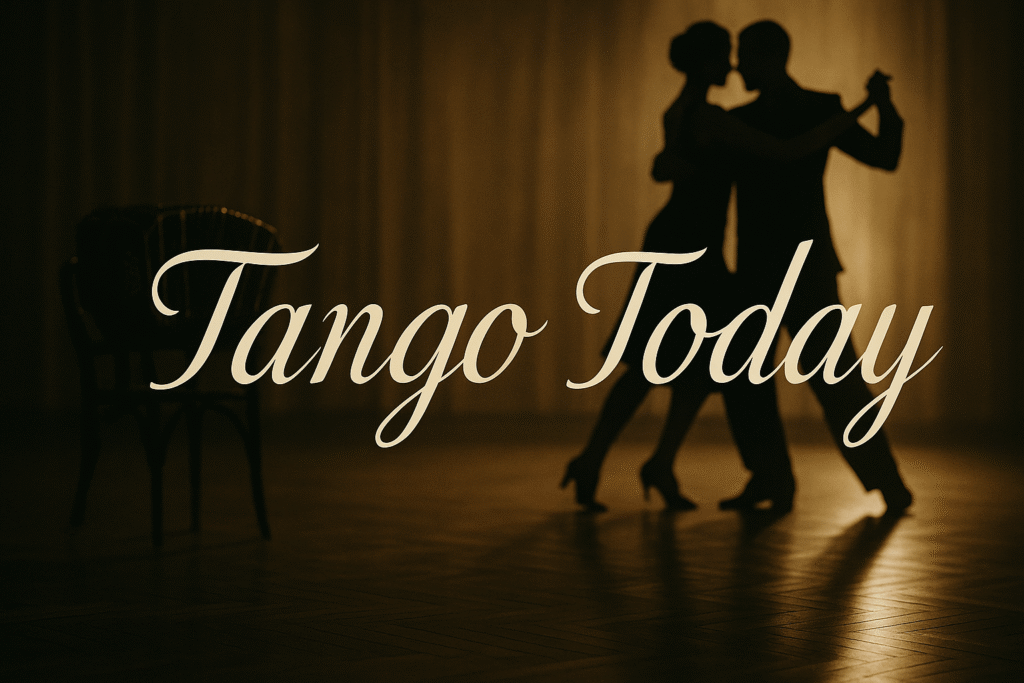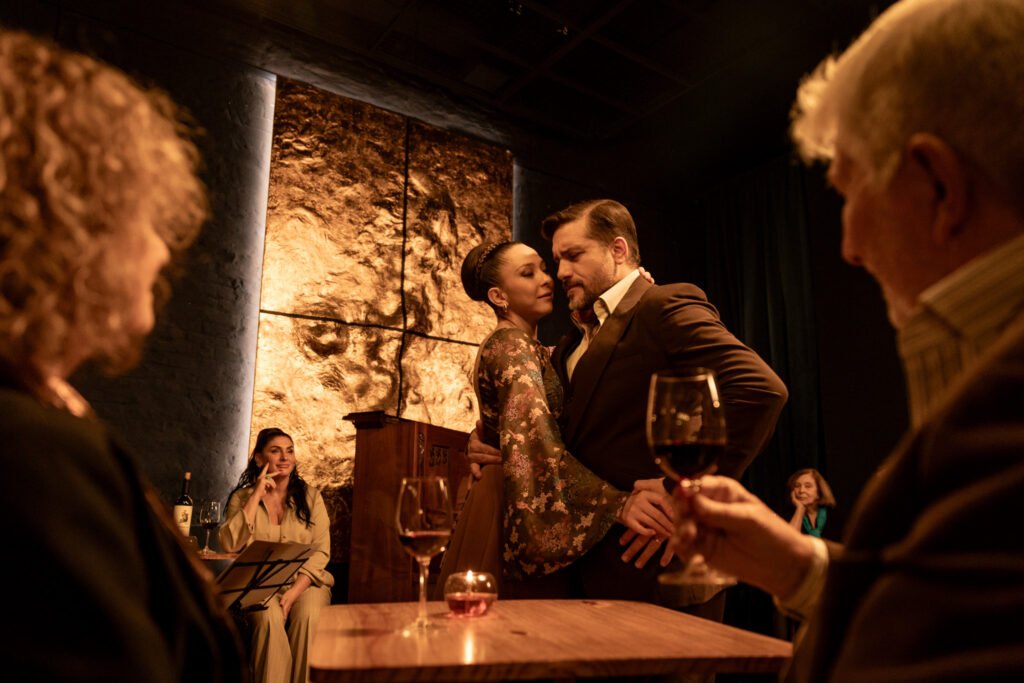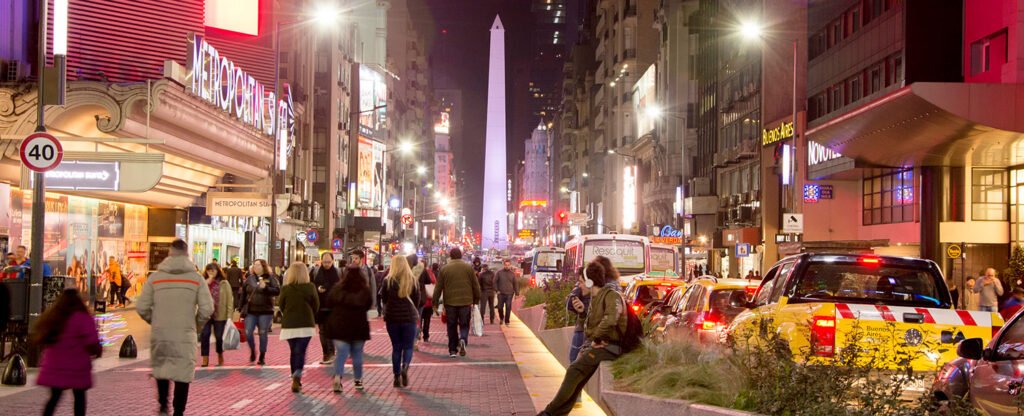The Soul of Tango Lyrics
Tango lyrics are more than just words set to music: they’re a poetic mirror of Argentine identity. Rooted in Buenos Aires’ working-class neighborhoods, these songs tell stories of longing, love, nostalgia, and heartache.
From the poignant “Mi Noche Triste” to the haunting verses of “Poema”, each lyric adds emotional depth to the music and dance that define the tango. When you immerse yourself in tango, you’re not just hearing a melody, you’re stepping into a narrative.
In Buenos Aires, tango isn’t simply performed. Tango is lived. Walk through the city’s historic neighborhoods, and you’ll hear typical melodies. These lyrics not only narrate personal heartbreaks but also reflect Argentina’s cultural soul.
Want to understand where it all began? Our article on the Origins of Tango walks you through tango’s rise from the margins.
From Street Slang to Poetic Masterpieces
Early Lyrics: Humor and Rough Edges
In tango’s earliest days, lyrics were humorous, cheeky, and full of lunfardo—the slang of Buenos Aires’ underworld. They painted vivid portraits of tough neighborhoods and unfiltered love stories. These early tangos, often sung in brothels, reflected the lives of marginalized communities: immigrants, laborers, and those navigating city life with grit and wit.
Rise of Romanticism: The Shift in Tone
By 1917, with Gardel’s recording of “Mi Noche Triste,” tango lyrics took a more introspective turn. They began to reflect heartbreak, lost love, and emotional vulnerability. Poets and songwriters elevated tango lyrics into genuine literature. They drew from gaucho folklore, European melodies, and everyday urban life to shape a new narrative style that blended pain and poetry.
This shift mirrored a broader societal transformation, as tango moved from the outskirts of Buenos Aires into salons, theaters, and the hearts of the middle class.
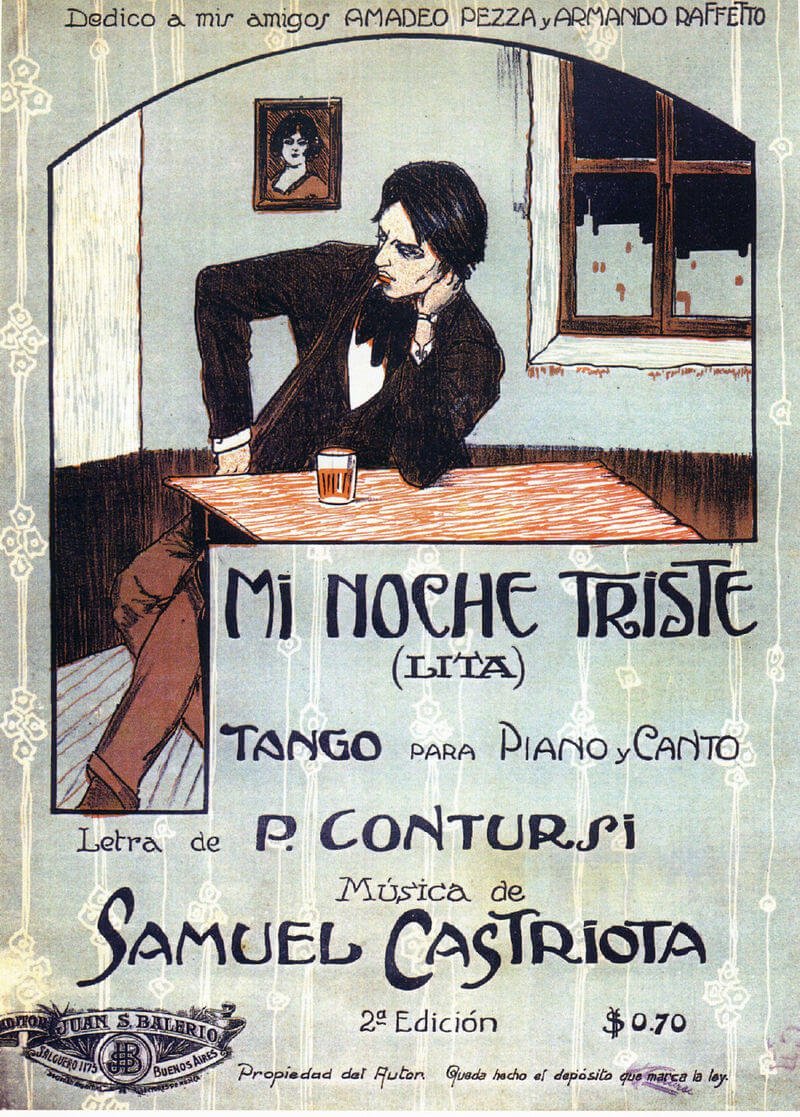
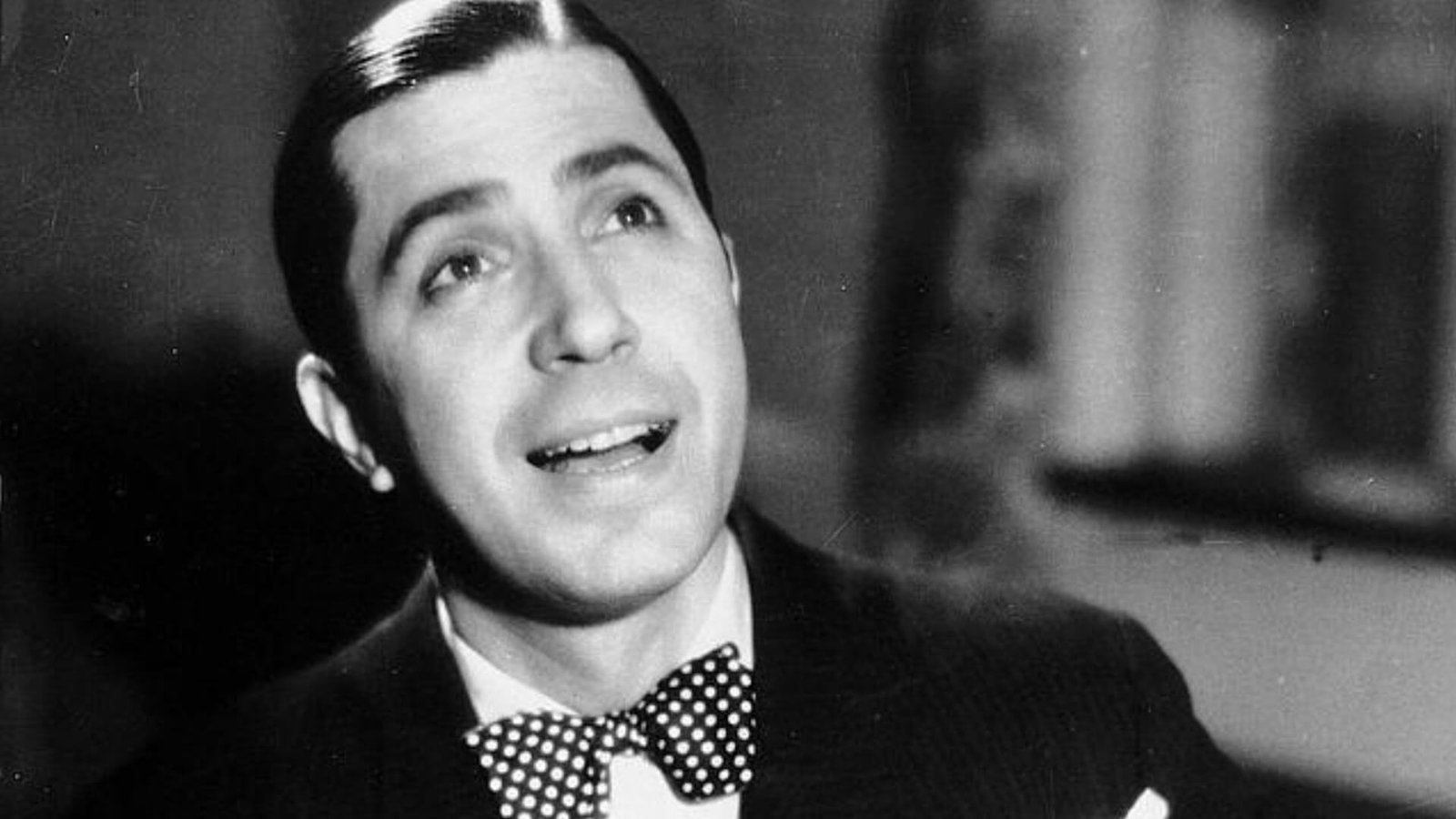
The Golden Age: When Tango Found Its Voice
From the 1920s to the 1940s, tango flourished in what is now called its Golden Age. The combination of poetry, music, and mass media created unforgettable classics. This was the era of Carlos Gardel, whose recordings turned tango into an international sensation. His signature songs, like “El Día Que Me Quieras” and “Volver,” defined an era and gave tango a new voice: romantic, bittersweet, and unforgettable.
Gardel wasn’t just a singer. Gardel was a symbol. His tragic death in a plane crash in 1935 cemented his mythic status. Even today, his legacy can be felt throughout Buenos Aires in murals, memorabilia, and the deep emotional charge his music still holds for fans worldwide.
At the same time, orchestras led by Julio De Caro, Francisco Canaro, and Aníbal Troilo introduced more sophisticated arrangements. Lyrics evolved alongside the music, becoming more polished and emotionally layered. Tango’s slang vocabulary grew, with terms from Spanish, Italian, and French enriching its texture.
🎧 Want to discover more? Don’t miss our article on tango fun facts for insights into Gardel, Piazzolla, and more.
💃 Curious to see tango lyrics brought to life? Secreto Tango Society offers an intimate, show-only experience where the stories in the music are expressed just meters from your seat. No distractions. Just raw, poetic movement that echoes every verse.
The triple “L”: Love, Loss, and Longing
Romance, Abandonment, and Hope
Many tango lyrics center around emotional tension—especially heartbreak. Songs like “Mi Noche Triste” set the tone: a man left alone, betrayed, and reminiscing. The theme of romantic disappointment echoes across countless tangos. But not every song is sorrowful. Some lyrics celebrate first love, passion rekindled, or the joy of fleeting connections.
These emotional shifts allow tango to speak to everyone, regardless of background. Whether it’s a longing gaze across a crowded milonga or a tear-streaked farewell, the lyrics put love and heartbreak center stage.
Even today, tango lyrics feel deeply personal. My grandma wasn’t from Buenos Aires—she lived in a small town —but every time Gardel sang Mi Buenos Aires querido, she’d close her eyes like she knew those streets by heart. And when Chorra played, you could see something shift in her expression, like the pain of lost love and disillusionment was hers too. That’s what tango does. It puts into words what so many feel but can’t always say, no matter where they come from.
Poetic Language and Emotional Honesty
Tango lyrics often use imagery to express what words alone cannot. You’ll find metaphors of rain, cigarette smoke, and deserted streets as symbols of solitude or longing. The lunfardo slang gives the language rhythm and depth. Even for non-Spanish speakers, the emotion shines through.
Many lyrics mention real Buenos Aires landmarks—street corners, cafés, train stations—creating a map of memory woven into the city itself. Each song becomes both personal and universal.
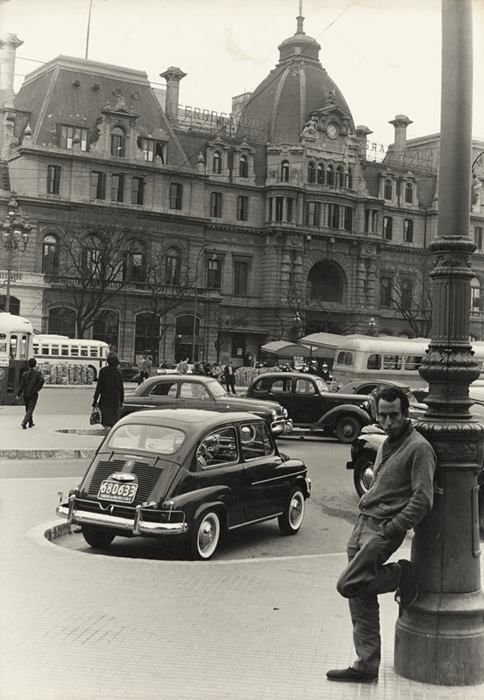
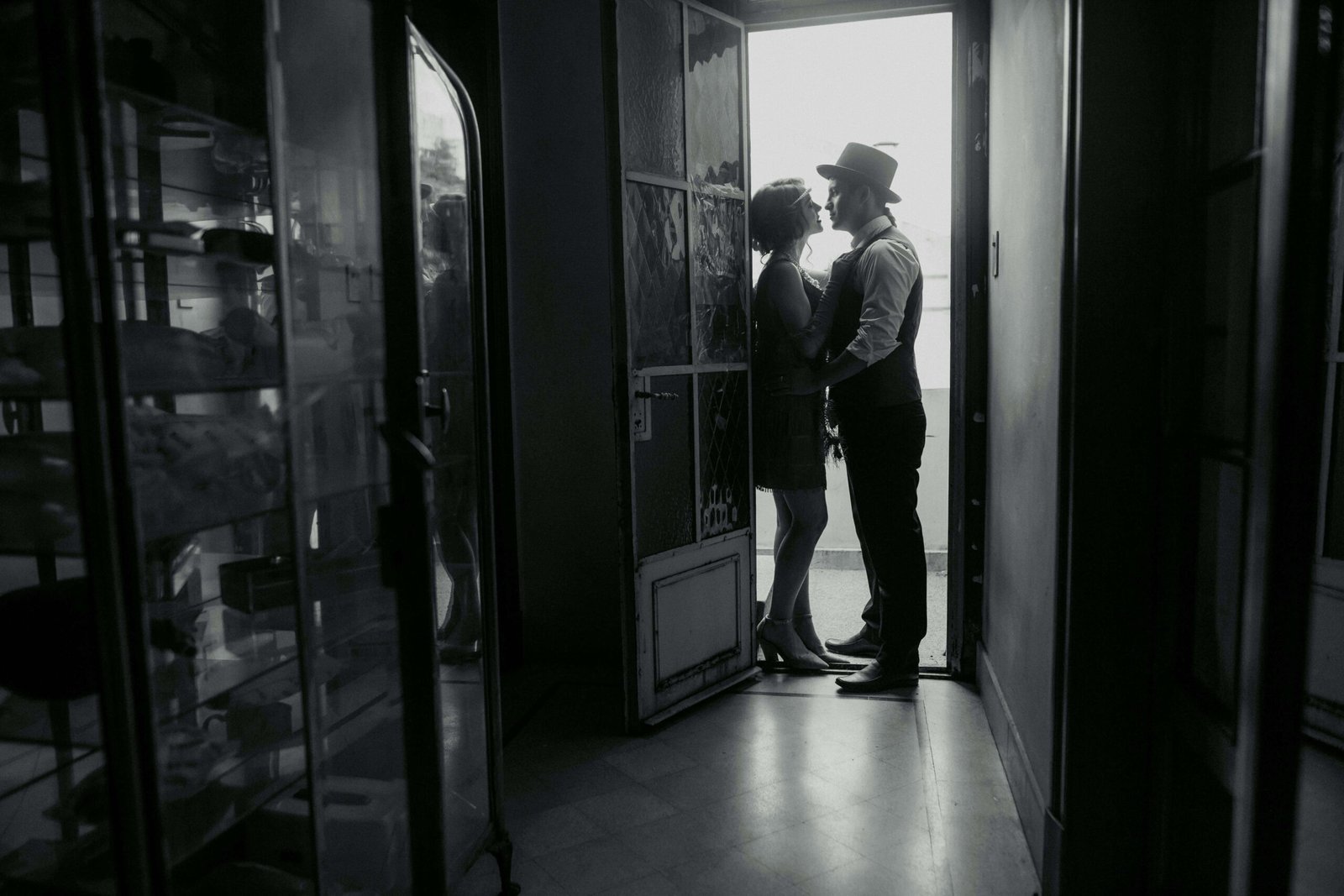
The Cultural Weight of Tango Lyrics
Tango lyrics are also historical documents of Argentina’s urban life, emotional norms, and social tensions. During the 20th century, some lyrics criticized wealth inequality, loneliness in the modern city, or the loss of old values. They carried social commentary beneath their melodies.
Some even became controversial—accused of promoting vice or challenging traditional gender roles. Yet this rebellious spirit helped tango remain fresh and relevant, decade after decade.
Frequently Asked Questions About Tango Lyrics👇🏼
What is the most famous tango lyric or song?
It’s hard to name just one as the most famous tango lyric, but “Mi Noche Triste” is certainly among the most iconic. Composed by Samuel Castriota with lyrics by Pascual Contursi, it’s widely recognized as a narrative tango with poetic depth. Popularized by Carlos Gardel, who incorporated it into his repertoire, the song marked a turning point in tango history, introducing heartfelt storytelling to the genre.
What defines a tango song?
A tango song blends strong rhythm, dramatic flair, and poetic lyrics. Key instruments include bandoneon, violin, piano, and bass. The lyrics often center on love, heartbreak, or memory.
What’s the most classic tango?
“La Cumparsita” is regarded as the most iconic tango. Composed in 1916, it exists in both instrumental and lyrical versions and is played in milongas worldwide.
Where can I enjoy a tango show in Buenos Aires?
For an authentic and unforgettable experience, try Secreto Tango Society. It’s a stripped-down, deeply emotional performance that captures the true spirit of Buenos Aires. If you’re looking to feel tango, not just watch it, this is the place.
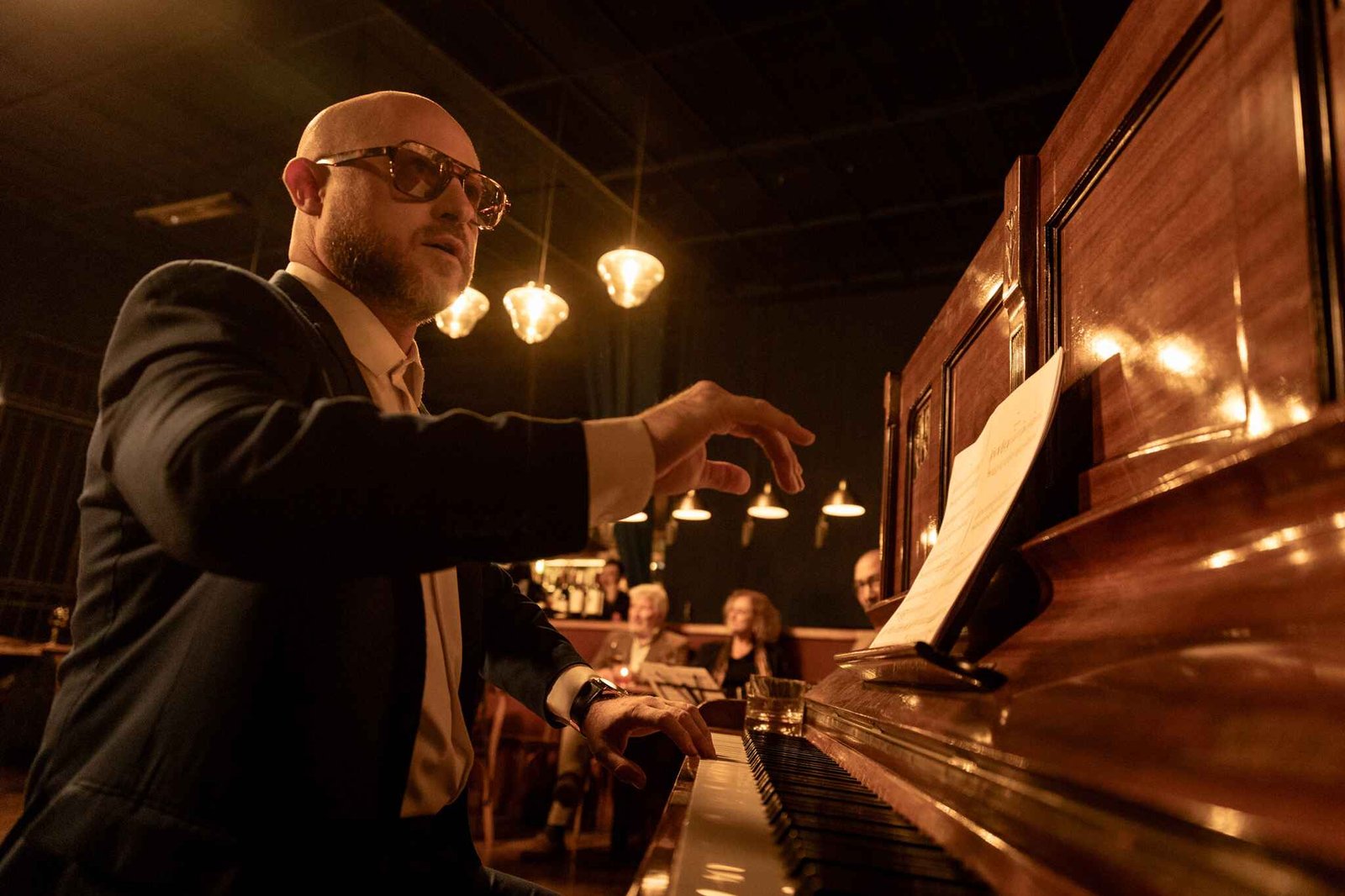
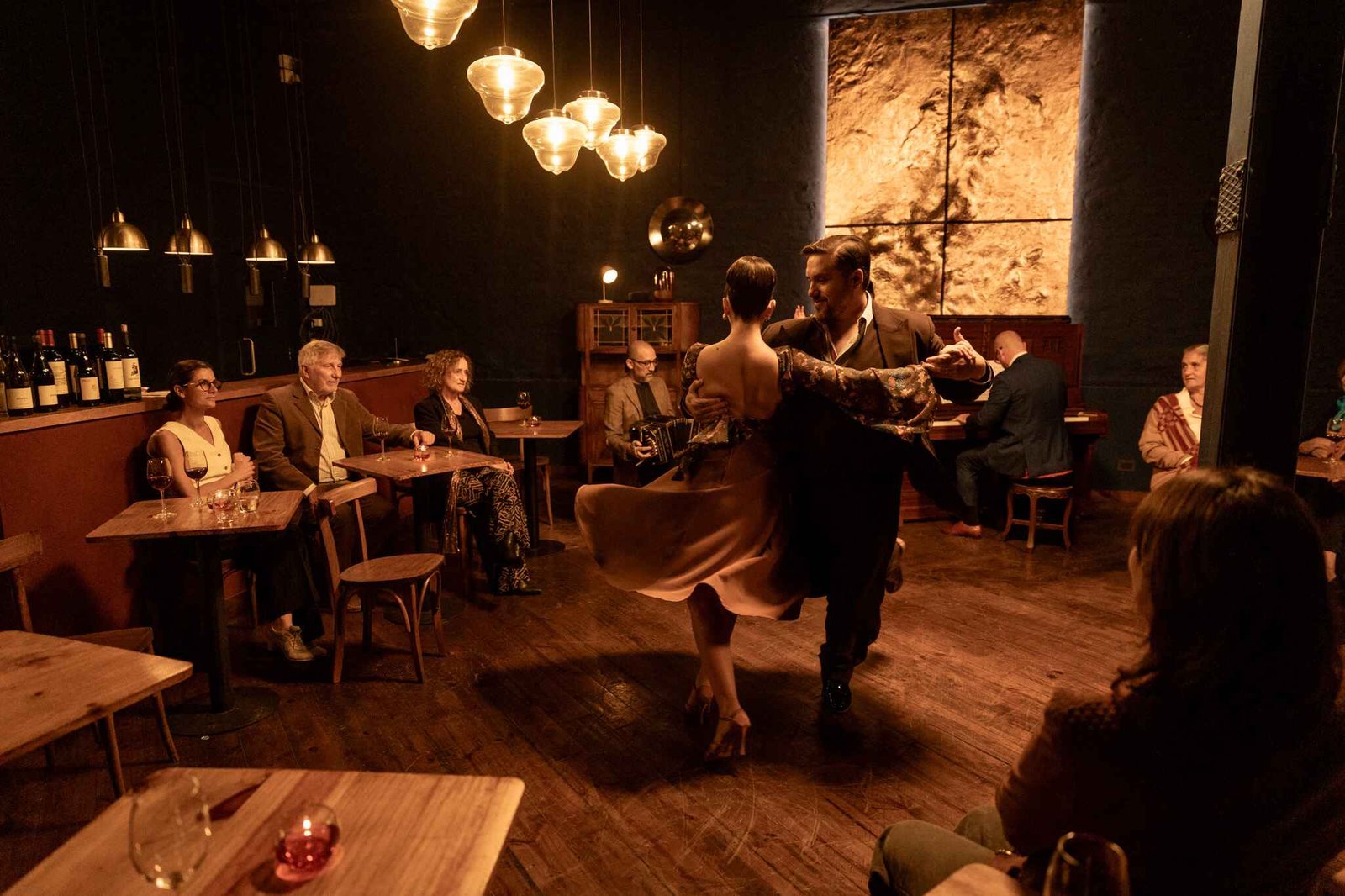
Wrapping up… Why Lyrics Matter in Tango?
A tango melody might move your feet. But tango lyrics move your heart. The words behind the dance invite you into a world of raw emotions—where every line can feel like it was written for your own story.
Whether you’re a dancer, a language lover, or just someone seeking soul-stirring music, tango lyrics are your entry point into Argentina’s most expressive art form.
📌 Want to dig deeper into tango’s legacy? Visit our tango blog for history, stories, and cultural context.
🎟️ And if you’re ready to experience tango in real life, don’t miss a night at Secreto Tango Society, where every lyric comes to life in movement, music, and emotion.
How useful was this post?
Click on a star to rate it!
Average rating 5 / 5. Vote count: 2
No votes so far! Be the first to rate this post.


